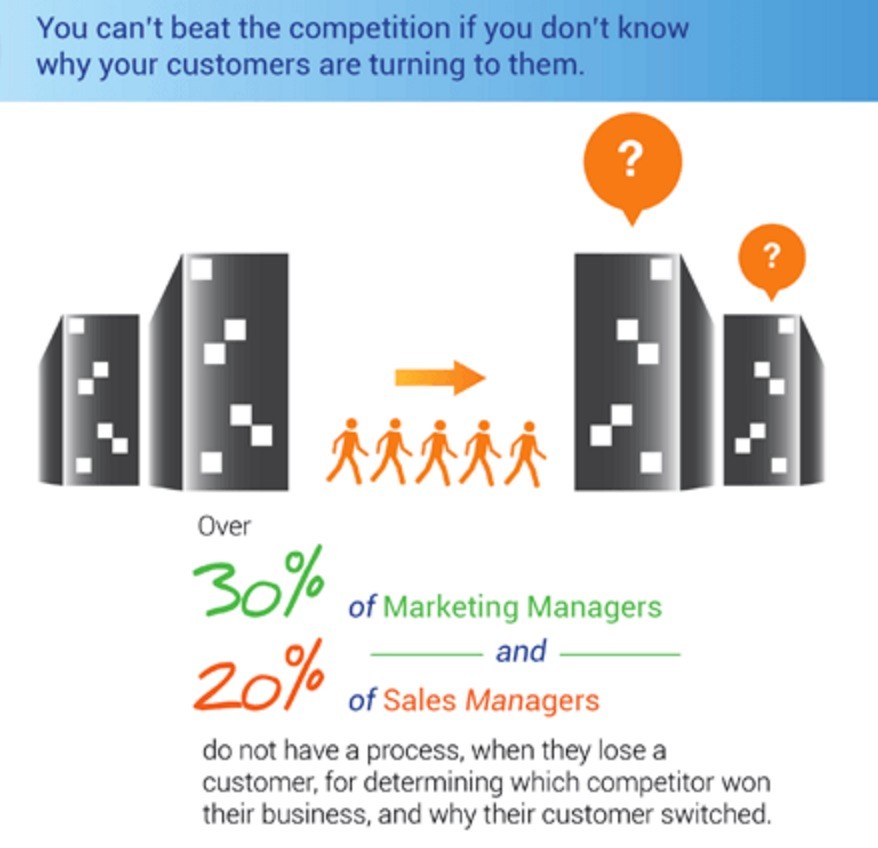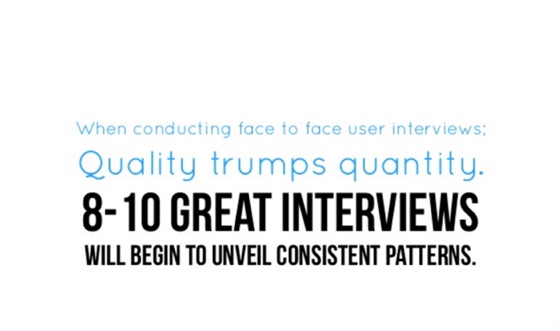
11 Jun How Customer Research Solves B2B Churn
[ad_1]
Why are your customers leaving?
Some SaaS companies have no clue. Yet, the solution is staring them right in the face.
Customer research is an underutilized tool in discovering why users churn. Teams fail to analyze user activity, onboarding engagement, and the competition.
Moreover, strive for retention. Research reveals that “the average ecommerce store generates 43% of its revenue from repeat purchases. At best-in-class companies, that number nears 80%.”
Sunil Gupta, co-author of “Managing Churn to Maximize Profits,” states, “What’s missing from traditional methods is that they focus only on a customer’s likelihood to churn, but not on the overall profitability of that customer.”
Empower your team to combat churn. And focus on consumer insight to retain more customers.
Why Research Matters
You don’t know what you don’t know. Research fills the gap between recognizing a problem and solving it.
With a simple hypothesis, you can test concepts and evaluate your target audience. You’re able to transform a guess into knowledge. And those data-driven strategies will move your company forward.
Research matters because it offers your team the opportunity to create the ultimate customer experience. To satisfy customers, you must understand their behaviors, needs, and wants. You need to know the why and how behind all their actions.
“When you understand the motivations driving your prospects and customers, you can reflect their feelings back to them (in their own words, I might add),” says Jennifer Havice, conversion copywriter at Make Mention.
Despite the importance of research, some companies fail to set up a system to derive insight from their findings. That’s an issue, especially when evaluating churn.
Some marketing and sales managers don’t even know why churned customers flock to the competition. Knowing why can be advantageous to halting churn before it actually happens.

Take the time to create a research process for your SaaS. It may center around improving the customer experience or the actual product. Meagan Timney, senior product designer at Inkling, writes:
“By committing to a process of prototyping, testing, releasing, and validating–known in the software world as ‘agile development’–you can make incremental gains, resulting in a much stronger overall product offering.”
Take your research seriously if you want to understand the how and why behind churn. Don’t let it get lost in a computer file labeled Miscellaneous.
Collect Data to Learn
Research is necessary. Now, what?
To pinpoint customer churn woes, your SaaS team must gather data. But before you start analyzing every spreadsheet in your company’s history, decide what’s important.
Revisit your buyer personas. Review your current customer profile. And examine your existing growth model. Understanding what you want will provide a clear path to earning results.
It’s also important to think of churn as an indicator of behavior, rather than just a number. Amy Gallo, contributing editor at Harvard Business Review, suggests that managers should ask themselves the following questions:
- What are we as a company doing to cause customer turnover?
- What are our customers doing that’s contributing to their leaving?
- How can we better manage our customer relationships to make sure it doesn’t happen?
Monitor your users’ actions. Analyze customer responses from live chat sessions and service complaints. Also, ask your customer success reps to jot down users’ main concerns.
In addition, talking to the customer is one of the best ways to learn about your brand’s strengths and weaknesses.
“Find potential customers and ask them about their challenges, their motivations, and how important it is to them to solve their problems. And remember—we said, customers, not just friends or family who might shade their answers out of politeness or just to make you feel better,” writes Inc. contributors Jon Burgstone and Bill Murphy, Jr.

Schedule a phone or face-to-face conversation with your customers. Steve Portigal, author of “Interviewing Users,” recommends asking relevant questions that will uncover growth opportunities.
Customers don’t just magically leave. Dig through your data to discover the answers.
The Impact of Research
Once all the data is gathered, give your team the space to derive insight from it. Use this knowledge to determine how your business improves next quarter.
Analyze your essential data points. Then, identify the gaps between the actual customer experience and the customer’s expectations. This will help you target where and how to make improvements.
Major brands value research and consider it an ongoing process. Receiving customer feedback is held to a high standard.
“Conducting consumer research isn’t a one-time deal for Virgin America. They regularly collect customer feedback to set business benchmarks to monitor their progress. And just the act of asking for all of this customer feedback is working in their favor,” states Audra Sorman, manager of content marketing and strategy at SurveyMonkey.
Ad tech platform provider Marin Software used customer intelligence to tackle their churn. They discovered that customers left due to lack of performance. So, their team started monitoring how products were used.
With that usage data, the Marin Software team found ways to keep current customers engaged. The customer research also unearthed opportunities to retain buyers during renewal time.
Several factors affect churn, like price, contract terms, competitors’ products, and the length of the customer relationship. Figure out what’s affecting your churn rates.
Retention Is Possible
According to McKinsey, “eCommerce spending for new customers is on average $24.50, compared to $52.50 for repeat customers.” Your loyal consumers offer the most value to your business.
Initially, gaining your ideal customer will cost money. However, it’s a better long-term strategy. Jeri Smith, president and CEO of Communicus, agrees:
“From a financial standpoint, new customer acquisition costs will be high for low-churn brands, but the lifetime value of a customer, once attained, will be worth it. Conversely, high-churn brands can attract new customers relatively inexpensively, but their lifetime value will be low.”
Determine the weak points in your customer experiences. What will lead to retention?
The Zendesk team found that they needed to take advantage of the old-school sales model. In particular, the customer service software company added more human touch to their account management.

Their team implemented a 12-month program that included regularly scheduled check-ins, phone calls, and emails. As a result, Zendesk earned their customers’ trust and experienced below-industry churn rates.
Discover the root problem for lost customers. Pierre Lechelle, SaaS B2B growth marketer and consultant, says:
“To effectively reduce your churn, you need to understand it and make sure you’ve all the information at hand to help your users. Gathering insights should be the first step to reduce Churn. Insights are everywhere: Analytics, Help-Desk software, Sales calls, Surveys, Interviews…”
Approach churn differently. Improve customer satisfaction.
Focus on the Research
Customer research is an effective tool for reducing your churn. It eliminates the guesswork and provides actual data.
Develop a research system at your SaaS company. Collect data from multiple sources. And use your findings to impact customer retention.
Do the research. Reduce the churn.
About the Author: Shayla Price lives at the intersection of digital marketing, technology and social responsibility. Connect with her on Twitter @shaylaprice.
[ad_2]
Source link
Social Media Agency, Social Media, Digital Marketing, Digital Marketing Agency, Search Engine Marketing, SEO, digital marketing agency dubai, video content marketing, crossfit marketing dubai, video marketing dubai, digital marketing agency abu dhabi, facebook marketing dubai, facebook marketing abu dhabi, digital marketing agencies in dubai, social media agency, content marketing dubai, content strategy dubai, branding dubai

